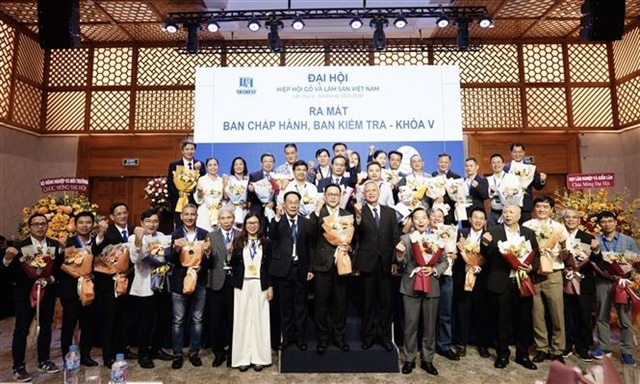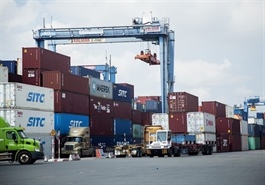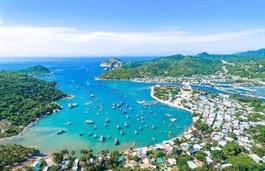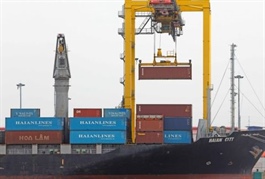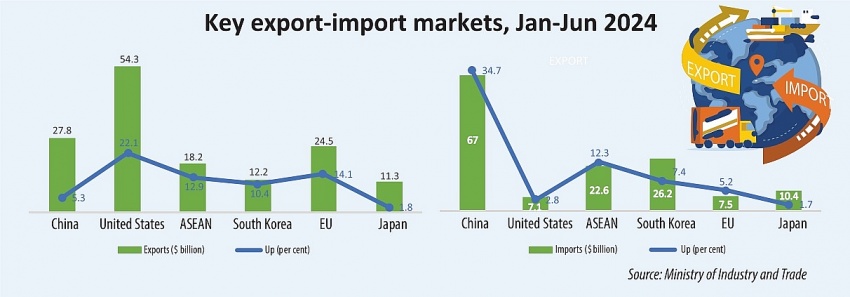Solutions to encourage international tourists to spend more in Việt Nam
Solutions to encourage international tourists to spend more in Việt Nam
Việt Nam's tourism sector welcomed over 8.8 million international visitors in the first half of 2024, marking a nearly 60 per cent increase compared to the same period last year.
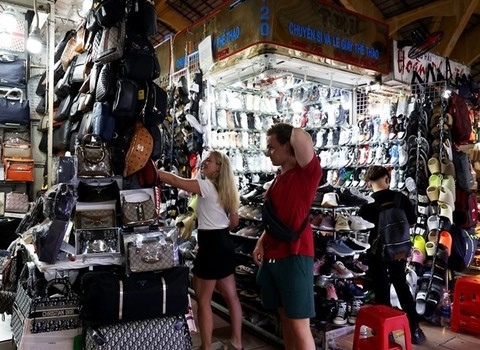
Foreign tourists visit the ancient town of Hội An. — VNA/VNS Photo |
This substantial growth signals a recovery from the post-COVID-19 era. Despite this progress, Việt Nam still faces significant challenges in making tourists spend more, lagging behind regional competitors like Thailand, Singapore and China.
Many tourists said that their visits to Việt Nam primarily involve sightseeing, beach outings, strolling and taking photos. Tourist destinations lack a wide variety of entertainment and recreational services. Although some places have improved by adding new facilities and services for visitors, these efforts have not been sufficient to attract repeat visits.
Despite comprising only one-fifth of domestic tourist numbers, foreign tourists spent more, contributing better to the national economy. On average, a foreign tourist spends 7 times more than a domestic tourist, resulting in 14 times higher revenue.
Michael Kokalari, chief economist at VinaCapital, highlighted in a recent report that foreign tourist spend has indirectly boosted the local economy by bringing substantial foreign exchange and promoting trade and investment.
In 2023, tourism contributed 4 percentage points to Việt Nam’s GDP growth. While foreign tourists' spending accounted for only 10 per cent of retail sales, it significantly impacted economic growth.
VinaCapital estimates that the total contribution of tourism to Việt Nam’s economy, including both direct and indirect contributions, is over 15 per cent of GDP. Before the pandemic, about 8 per cent of Việt Nam’s GDP was accounted for by international tourism, compared to 12 per cent in Thailand. Another percentage point is expected to be added to national GDP growth by the ongoing recovery in 2024.
Trần Phương Linh, Marketing and IT director of BenThanh Tourist, saw exceptional growth in the international tourism market for their business since the beginning of the year. The company’s foreign tourist numbers and revenue increased by over 50 per cent compared to the same period in 2023. Both traditional and new markets have shown promising growth.
Markets such as India, Chinese Taipei, and Europe have all seen significant growth, with foreign tourists in Hồ Chí Minh City particularly interested in cultural and historical tours, local cuisine and the local coffee culture.

International tourists shopping at Bến Thành Market. — VNA/VNS Photo |
At Bến Thành Market, international tourists account for 60 per cent of sales, with many purchasing local fruits, coffee and tea as souvenirs. The impact of foreign tourist spending is further highlighted by the HCM City Customs Department, which processed VAT refunds totalling more than VNĐ40 billion for over 7,200 foreign tourists in the first five months of 2024.
Despite these positive trends, Việt Nam needs to enhance its tourism services to attract higher spending from tourists. Compared to neighbouring countries such as Thailand, Singapore and China, Việt Nam offers fewer entertainment and shopping options. This is evident in spending patterns, where the majority of tourists' expenses are on food and beverages, reflecting the lack of diverse attractions and entertainment choices.
Việt Nam also needs to improve its visa policies and develop unique tourism products to retain international tourists. Recent policy changes have extended e-visa duration and allowed longer stays for citizens from 13 countries. However, to attract and retain tourists, Việt Nam must offer more engaging activities and entertainment options.
There is also potential to target high-spending markets such as Australia and New Zealand, especially during the winter months when tourists seek warmer destinations. Strategies could include visa waivers and tailored tourism products focusing on beach resorts and cultural experiences.
"Việt Nam needs short, medium and long-term plans to attract tourists. Short-term plans should simplify visa regulations and improve air connectivity, encouraging more direct flights from key markets. The aviation and tourism sectors need to strengthen cooperation and reduce service fees at international airports," Hoàng Nhân Chính, head of the Secretariat of the Việt Nam Tourism Advisory Board (TAB), said.
Medium-term strategies should develop responsible tourism products, extend tourists' stays and spending and innovate marketing campaigns. Authorities also need to manage destinations sustainably and make them friendly, enhancing visitor experiences and encouraging repeat visits. Digital transformation in tourism should be accelerated to meet new post-pandemic demands and trends, Chính said.
"Long-term strategies should focus on upgrading transport and tourism infrastructure, expanding land routes to tourist destinations and international airports. In the post-pandemic period, the tourism workforce is both lacking and weak, necessitating enhanced training for high-skilled workers to meet demanding tourist requirements," he said.
"Việt Nam could adopt similar measures to boost tourism and aviation, offering combo packages of airfare and hotel vouchers at attractive prices. Besides publicising these offers widely, the tourism sector should select reputable accommodation providers to participate in this stimulus programme."
Chính believes this approach will make Việt Nam a more appealing destination for international tourists.
Việt Nam can also learn from Thailand, which has taken measures to reduce airfares and subsidise accommodation to attract foreign tourists. Adopting similar strategies, such as offering flight and accommodation combo packages, could enhance Việt Nam’s appeal to international tourists.


